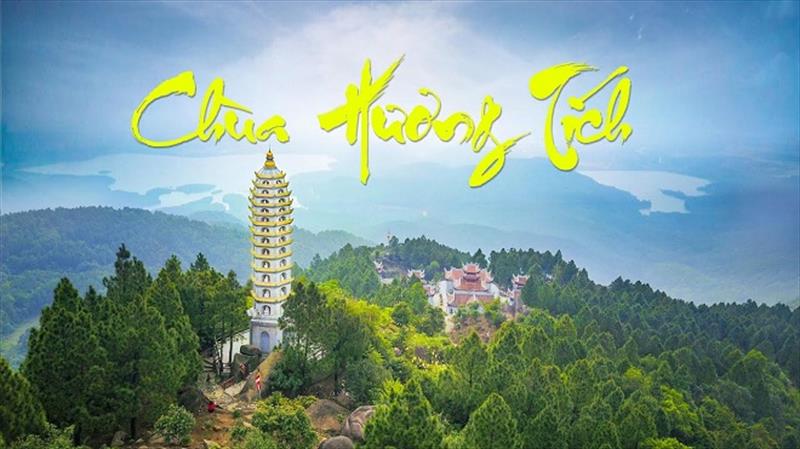Huong Tich Pagoda in Ha Tinh

Origin of Huong Tich Pagoda
Huong Tich Pagoda is associated with the legend of Princess Dieu Thien, the daughter of King Trang Vuong of the So kingdom. According to folklore, Princess Dieu Thien, unwilling to marry an evil martial official forced by her father, chose to embrace Buddhism and run away. The Princess was protected by the Buddha and a Divine Tiger, leading her to the Hong Linh mountain for spiritual practice. She established a sanctuary in Huong Tich Cave and, after enlightenment, transformed into the Bodhisattva Quan Am with a thousand eyes and a thousand hands.
Historical documents state that Huong Tich Pagoda was constructed in the 13th century during the Tran dynasty. The poet Nguyen Thiep praised the pagoda with the lines: "Huong Tich in the Tran Dynasty - The first ranking peak on the beautiful Ngan Hong Mountain." In 1885, the pagoda suffered significant damage in a large fire. In 1901, Dao Tan, the governor of An Tinh province, contributed funds for restoration. In 1936, King Bao Dai inscribed the pagoda's name on Anh Dinh, one of the nine large bronze urns in the Imperial City of Hue.
Architecture of Huong Tich Pagoda
Huong Tich Pagoda features a unique and impressive architectural blend of Vietnamese and Chinese styles. The pagoda consists of three main areas: the front hall area, the main hall area, and the rear palace area. The front hall area includes Tam Quan (Three Gates), Co Quan Tam (Three Saints Gate), and Co Quan Tam (Three Great Gates). The main hall area consists of Dai Hung Buu Dien (Main Hall), Phat Quang Dien (Buddha Hall), and Cuu Long Dien (Nine Dragon Hall). The rear palace area includes Huong Tich Cave (Huong Tich Shrine), Thanh Son Cave (Thanh Son Shrine), and Thanh Son Cave (Thanh Son Shrine).
The highlight of the pagoda is Huong Tich Cave, a natural cave measuring about 100m² in width and 10m in height, resembling an inverted bowl. Inscribed on the cave's entrance is the phrase "Nam Thien De Nhat Dong," granted by King Trinh Sam. Inside the cave is a stone statue of the Bodhisattva Quan Am, 1.2m tall, seated on a lotus pedestal. Next to the Quan Am statue are two statues of Bodhisattvas Pho Hien and Manjusri. The cave also contains various unique stone formations depicting mythical creatures such as dragons, phoenixes, birds, fish, flowers, and fruits.
.jpg)
Huong Tich Pagoda has received praise from many poets and writers through their literary works, including:
- Nguyen Du wrote the poem "Huong Tich Tu" during his official trip to Ha Tinh in 1819.
- Nguyen Cong Tru wrote the poem "Huong Tich Tu Ky" during his inspection tour in Ha Tinh in 1820.
- Ho Chi Minh wrote the poem "Huong Tich Tu" during his visit to the pagoda in 1958.
- Nguyen Dinh Thiep wrote the poem "Huong Tich" in the collection "My Country" in 1961.
- Nguyen Duy wrote the poem "Huong Tich" in the collection "A Day in the Country" in 1975.
Huong Tich Pagoda in Ha Tinh is an ancient and sacred temple with unique and impressive architecture, surrounded by breathtaking natural landscapes. The pagoda not only attracts those who love exploration and religion but also stands as a precious cultural and historical heritage of the country. Huong Tich Pagoda is a destination to be proud of and a must-visit for travelers to the land of Ha Tinh.

